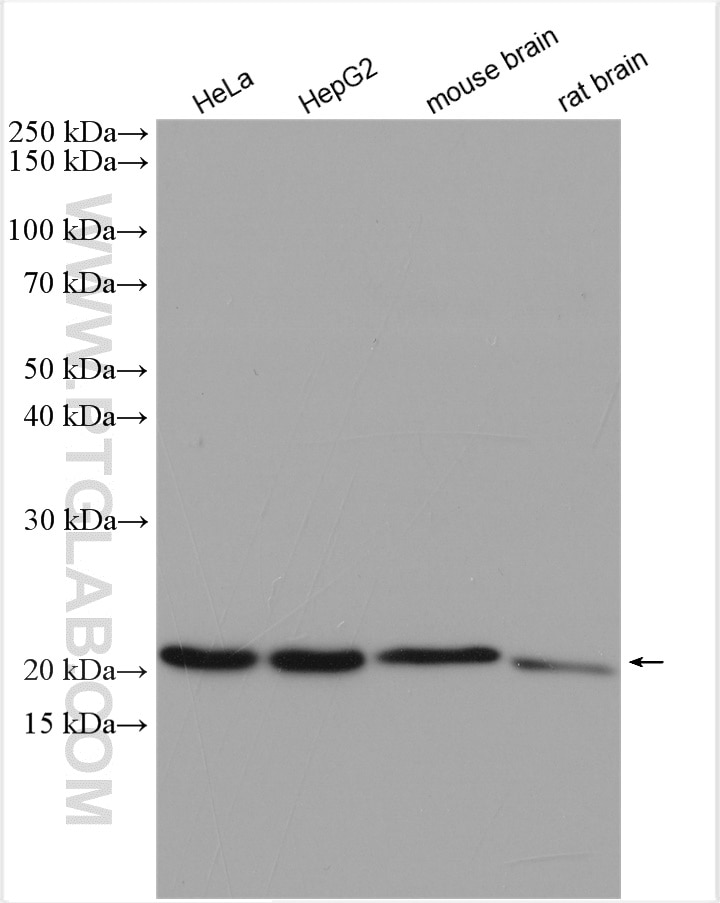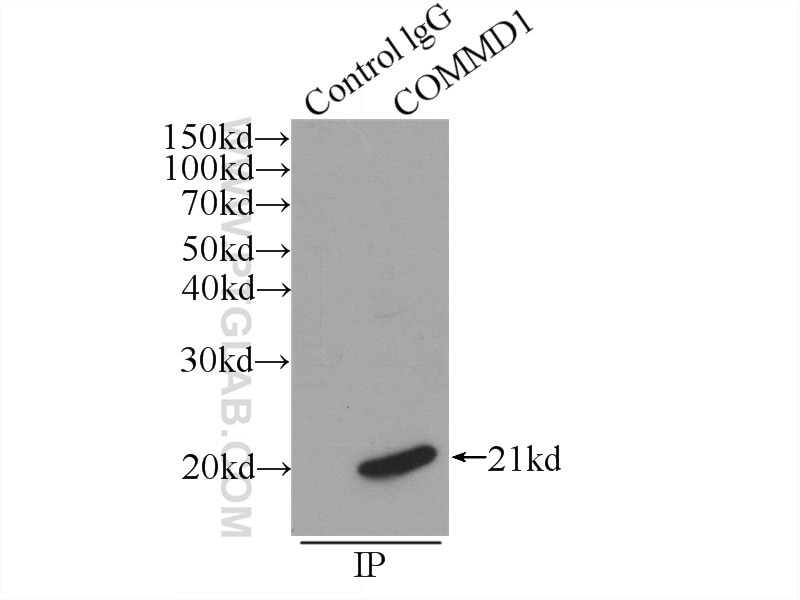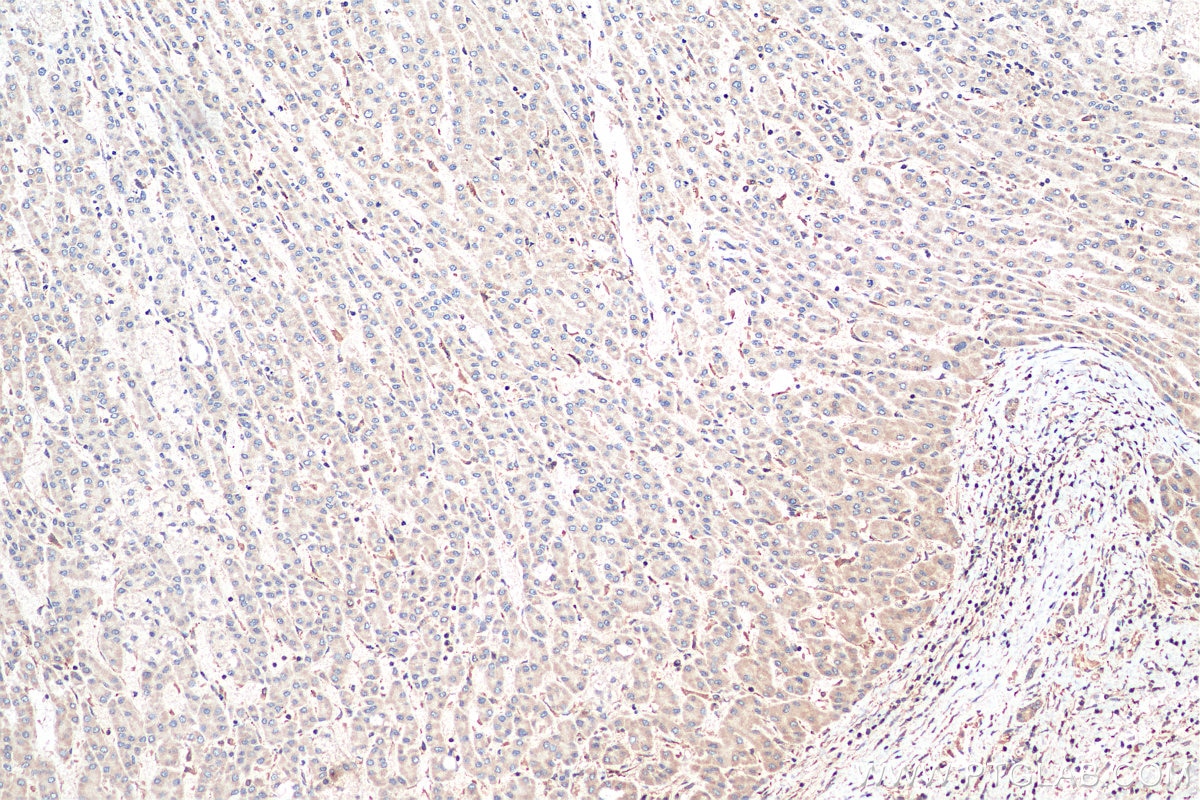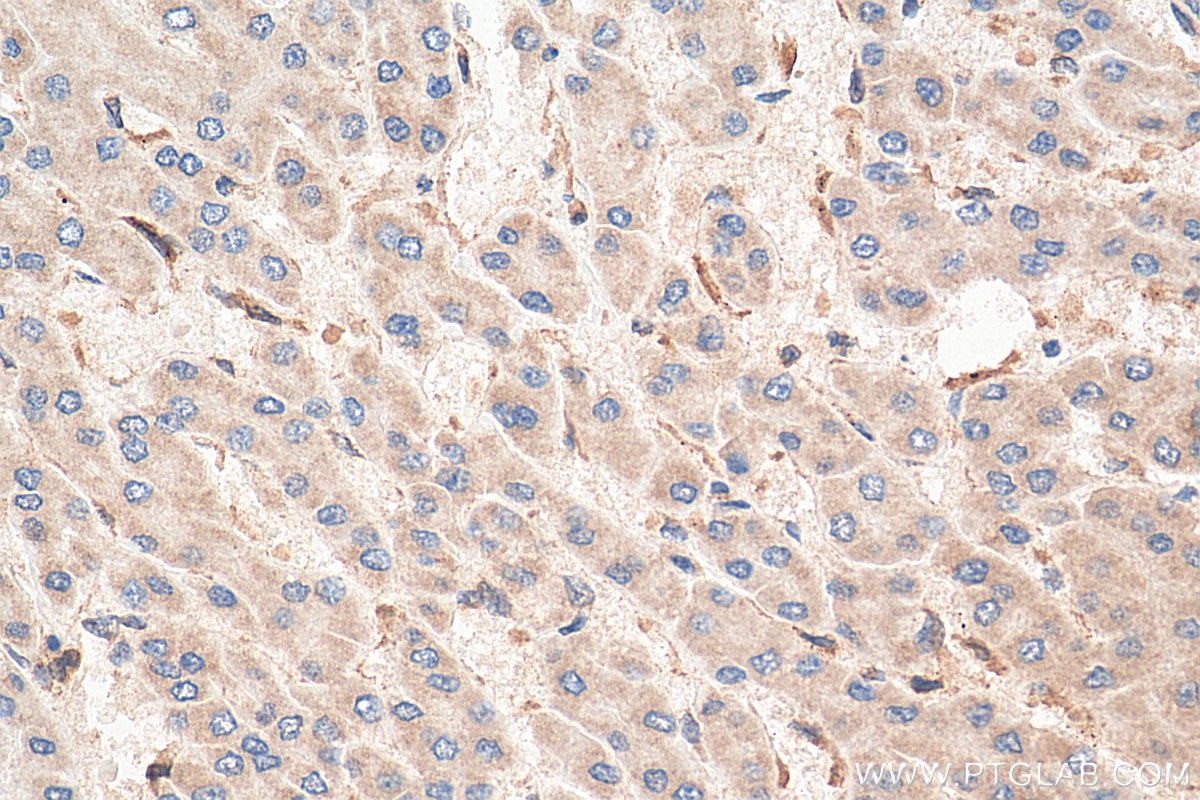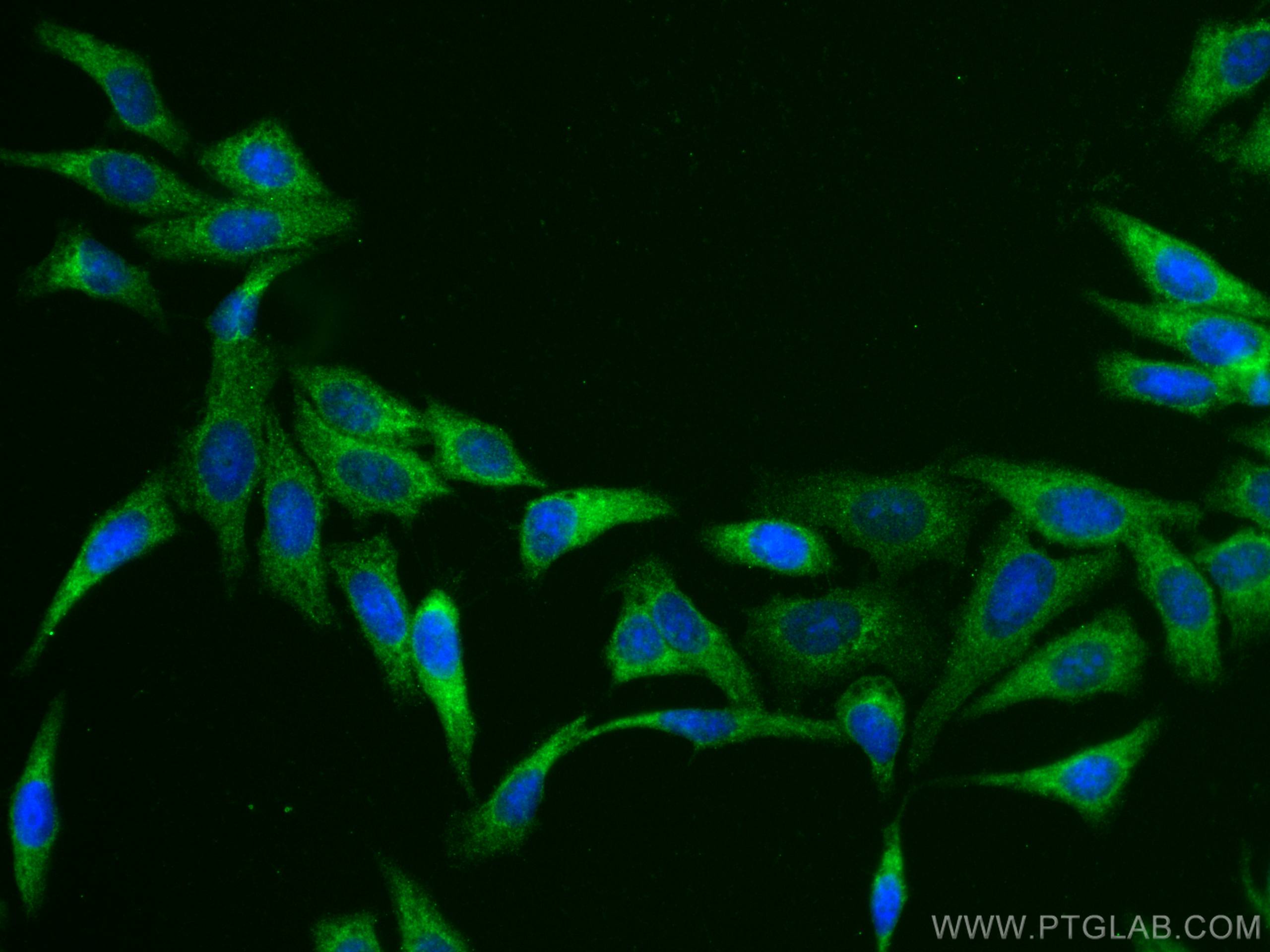Tested Applications
| Positive WB detected in | HeLa cells, HepG2 cells, mouse brain tissue, rat brain tissue |
| Positive IP detected in | mouse brain tissue |
| Positive IHC detected in | human liver cancer tissue Note: suggested antigen retrieval with TE buffer pH 9.0; (*) Alternatively, antigen retrieval may be performed with citrate buffer pH 6.0 |
| Positive IF/ICC detected in | HepG2 cells |
Recommended dilution
| Application | Dilution |
|---|---|
| Western Blot (WB) | WB : 1:500-1:2000 |
| Immunoprecipitation (IP) | IP : 0.5-4.0 ug for 1.0-3.0 mg of total protein lysate |
| Immunohistochemistry (IHC) | IHC : 1:50-1:500 |
| Immunofluorescence (IF)/ICC | IF/ICC : 1:50-1:500 |
| It is recommended that this reagent should be titrated in each testing system to obtain optimal results. | |
| Sample-dependent, Check data in validation data gallery. | |
Published Applications
| KD/KO | See 6 publications below |
| WB | See 22 publications below |
| IHC | See 5 publications below |
| IF | See 6 publications below |
| CoIP | See 4 publications below |
Product Information
11938-1-AP targets COMMD1 in WB, IHC, IF/ICC, IP, CoIP, ELISA applications and shows reactivity with human, mouse, rat samples.
| Tested Reactivity | human, mouse, rat |
| Cited Reactivity | human, mouse, rat, canine |
| Host / Isotype | Rabbit / IgG |
| Class | Polyclonal |
| Type | Antibody |
| Immunogen |
CatNo: Ag2535 Product name: Recombinant human COMMD1 protein Source: e coli.-derived, PGEX-4T Tag: GST Domain: 1-190 aa of BC022046 Sequence: MAAGELEGGKPLSGLLNALAQDTFHGYPGITEELLRSQLYPEVPPEEFRPFLAKMRGILKSIASADMDFNQLEAFLTAQTKKQGGITSDQAAVISKFWKSHKTKIRESLMNQSRWNSGLRGLSWRVDGKSQSRHSAQIHTPVAIIELELGKYGQESEFLCLEFDEVKVNQILKTLSEVEESISTLISQPN Predict reactive species |
| Full Name | copper metabolism (Murr1) domain containing 1 |
| Calculated Molecular Weight | 190 aa, 21 kDa |
| Observed Molecular Weight | 21 kDa |
| GenBank Accession Number | BC022046 |
| Gene Symbol | COMMD1 |
| Gene ID (NCBI) | 150684 |
| RRID | AB_2083542 |
| Conjugate | Unconjugated |
| Form | Liquid |
| Purification Method | Antigen affinity purification |
| UNIPROT ID | Q8N668 |
| Storage Buffer | PBS with 0.02% sodium azide and 50% glycerol, pH 7.3. |
| Storage Conditions | Store at -20°C. Stable for one year after shipment. Aliquoting is unnecessary for -20oC storage. 20ul sizes contain 0.1% BSA. |
Background Information
COMMD1(COMM domain-containing protein 1), also named MURR1, is implicated in copper homeostasis by binding one copper ion per monomer. COMMD1 was reported to accelerate the ubiquitination and degradation of NF-kappa-B subunits, its deficiency exerts enhanced NF-kappa-B mediated celluar response. Ubiquitinated by XIAP (X-linked inhibitor of apoptosis), COMMD1 undergoes proteasomal degradation. SOD1 activity can be downregulated by COMMD1.
Protocols
| Product Specific Protocols | |
|---|---|
| IF protocol for COMMD1 antibody 11938-1-AP | Download protocol |
| IHC protocol for COMMD1 antibody 11938-1-AP | Download protocol |
| IP protocol for COMMD1 antibody 11938-1-AP | Download protocol |
| WB protocol for COMMD1 antibody 11938-1-AP | Download protocol |
| Standard Protocols | |
|---|---|
| Click here to view our Standard Protocols |
Publications
| Species | Application | Title |
|---|---|---|
Circ Res COMMD Family Regulates Plasma LDL Levels and Attenuates Atherosclerosis Through Stabilizing the CCC Complex in Endosomal LDLR Trafficking.
| ||
Nat Commun A genome-wide CRISPR screen identifies host factors that regulate SARS-CoV-2 entry. | ||
Nat Commun CCC- and WASH-mediated endosomal sorting of LDLR is required for normal clearance of circulating LDL.
| ||
Cell Rep COMMD5/HCaRG Hooks Endosomes on Cytoskeleton and Coordinates EGFR Trafficking.
| ||
Theranostics SPTBN1 inhibits inflammatory responses and hepatocarcinogenesis via the stabilization of SOCS1 and downregulation of p65 in hepatocellular carcinoma. |
Reviews
The reviews below have been submitted by verified Proteintech customers who received an incentive for providing their feedback.
FH Emilia (Verified Customer) (11-30-2018) | works well for WB
|

